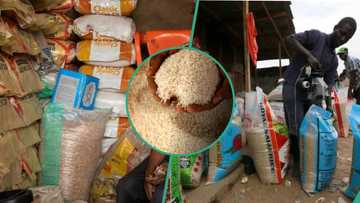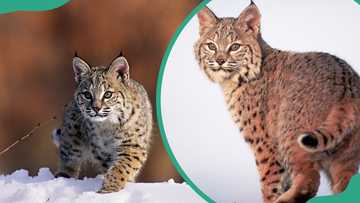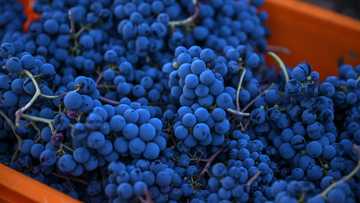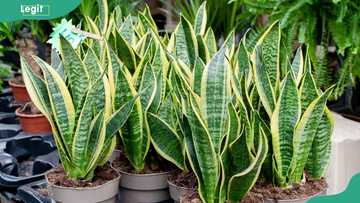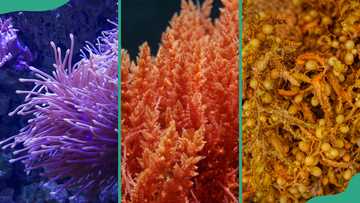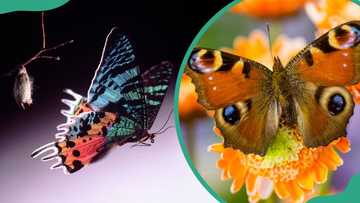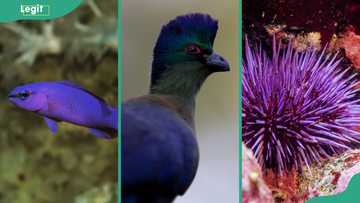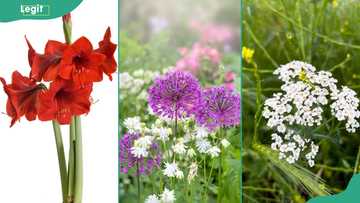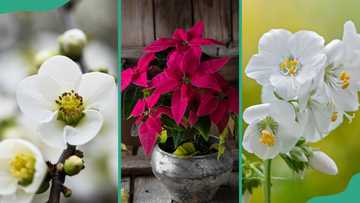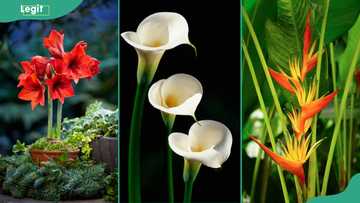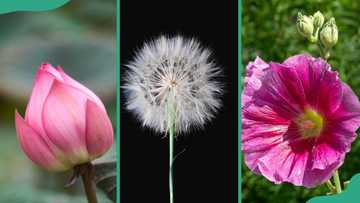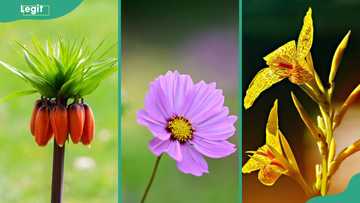Common weeds and their scientific names with pictures in Nigeria
Did you know weeds are plants considered undesirable in a specific situation? Agriculture in Nigeria accounts for a significant proportion of the nation's gross domestic product (GDP). Dr. Okon G. Okon, Plant Stress Physiologist at Akwa Ibom State University, notes that Nigeria’s varied ecological zones produce weeds—from drought-resistant types in the north to broadleaf species in the rainforest.
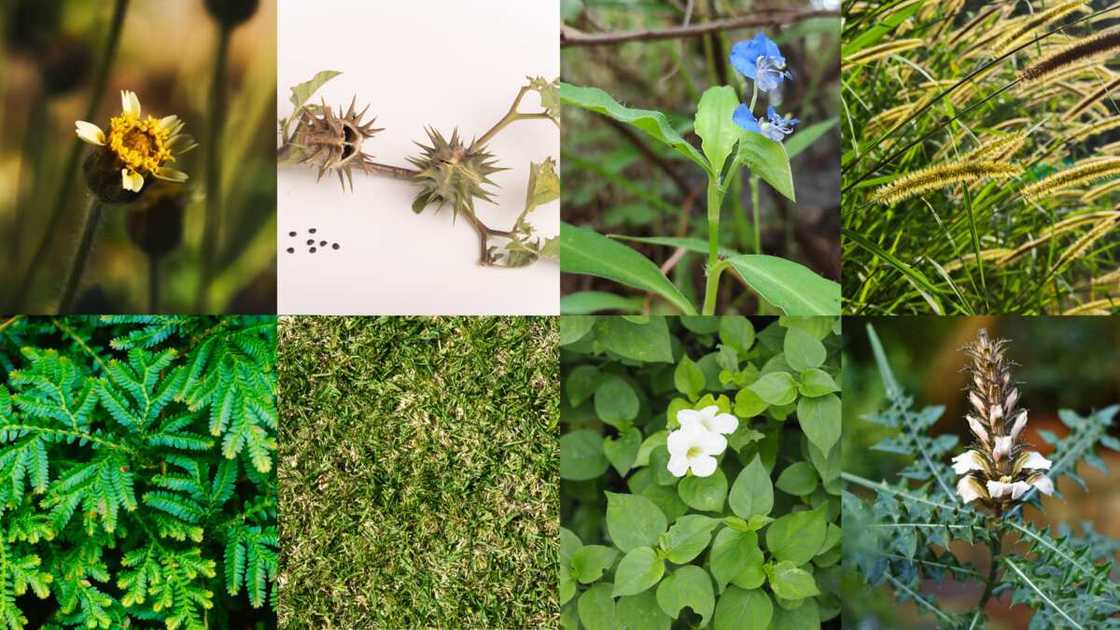
Source: Getty Images
TABLE OF CONTENTS
- Key takeaways
- Common weeds and their scientific names with pictures in Nigeria
- Siam weed (Chromolaena odorata)
- Spear grass (Imperata cylindrica)
- Dayflower (Commelina benghalensis)
- Jimson weed/ burundanga (Datura stramonium)
- Nutgrass (Cyperus rotundus)
- Milkweed (Euphorbia heterophylla)
- Bahama grass (Cynodon dactylon)
- Elephant grass (Pennisetum purpureum)
- Carpet grass (Axonopus compressus)
- African Club Moss (Selaginella kraussiana)
- Buffalo grass (Stenotaphrum secundatum)
- Creeping foxglove (Asystasia gangetica)
- Falsethistle (Acanthus montanus)
- Nuke-Noh (Tridax procumbens)
- Regional prevalence of weeds
- Differentiating harmful and useful weeds
- Weed control methods in Nigeria
- What are the common weeds found on farms?
- What are the common weeds and their botanical names?
- What is the botanical name of Bahama grass?
- What is the botanical name of Carpet grass?
Key takeaways
- Weeds compete for valuable space and essential nutrients on farmlands, posing a significant menace for farmers.
- Specific weeds vary by ecological zones due to differences in climate, soil type, cropping systems, and land use practices.
- Effective weed management in Nigeria employs traditional, mechanical, cultural, chemical, and biological control methods, often through integrated weed management.
Common weeds and their scientific names with pictures in Nigeria
Weeds are a menace to crop farmers because they compete with their crops for space and nutrients. Check out the common Nigerian weeds and their botanical names below.
Siam weed (Chromolaena odorata)
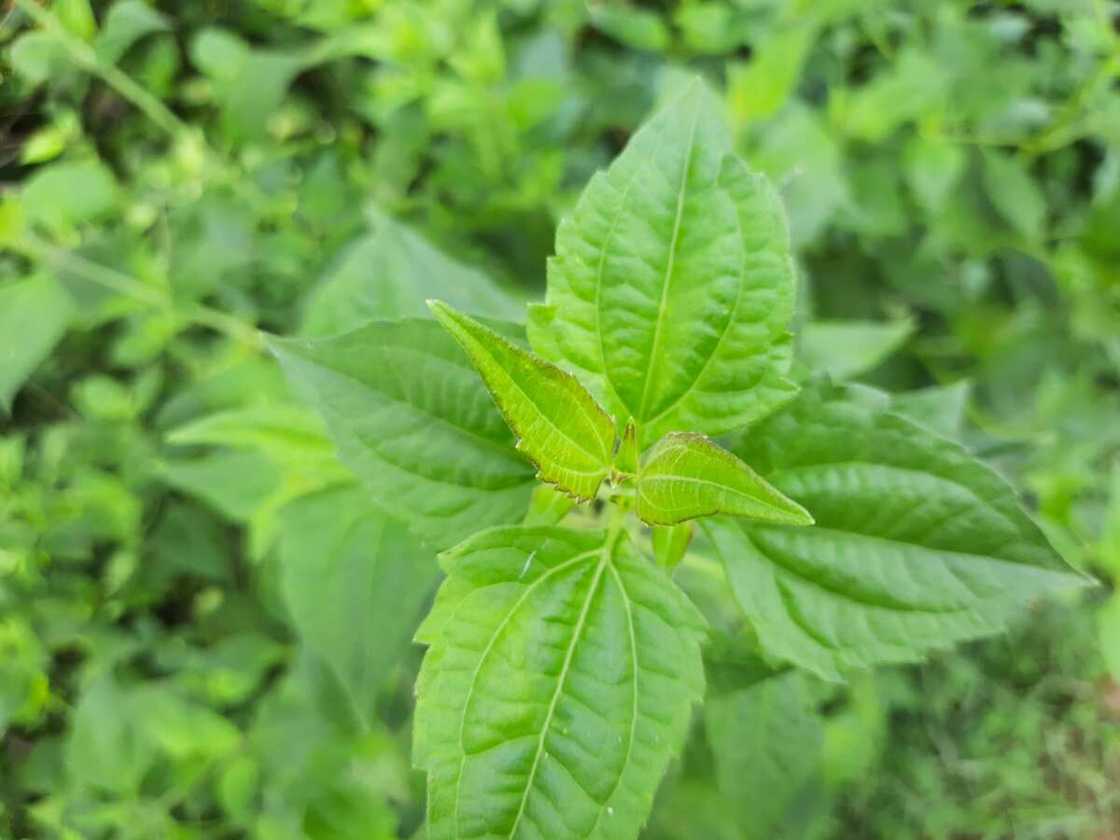
Source: Getty Images
Siam weed or Chromolaena odorata features among the top weeds and their botanical names with pictures in Nigeria. It can grow up to three metres tall in open fields.
This plant thrives in tropical and subtropical regions. It invades riparian zones, forest margins, bushland, waste sites, roadsides, disturbed sites, neglected pastures, crops and plantations.
Spear grass (Imperata cylindrica)
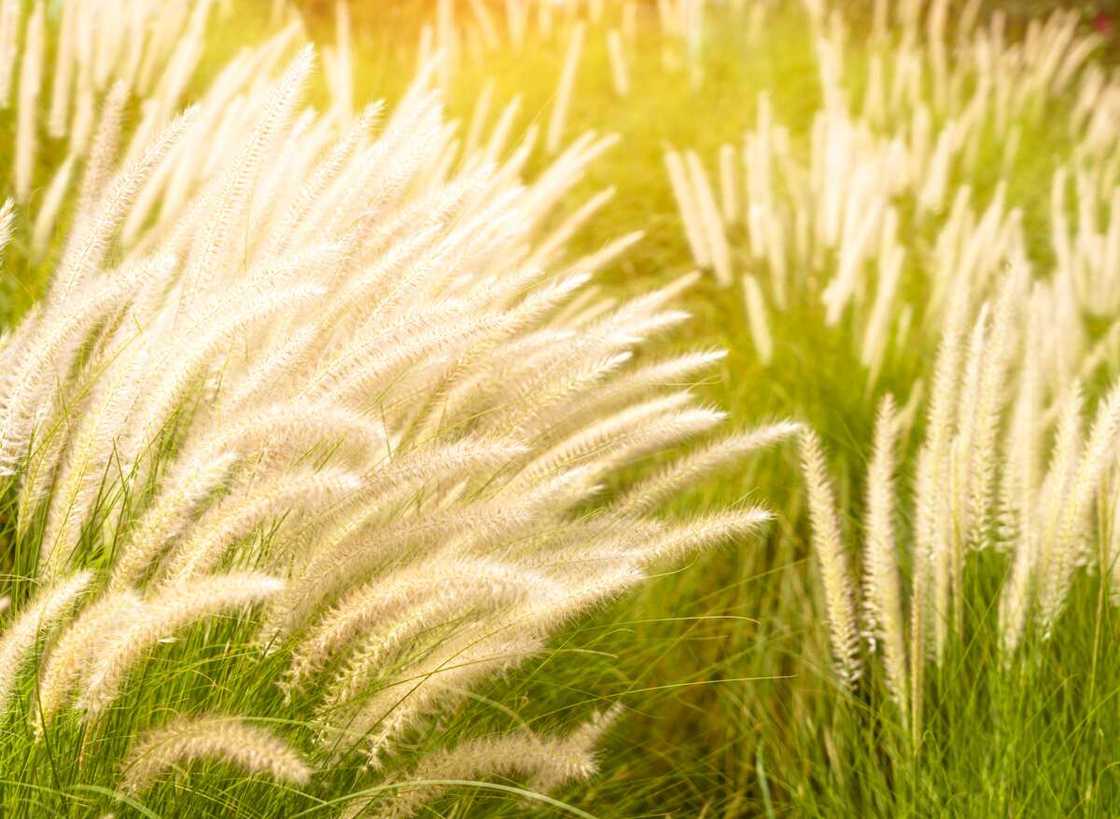
Source: Getty Images
If you are looking for a list of grasses and their botanical names with pictures, you will come across Spear grass or Imperata cylindrica. This is a perennial grass that shoots to a height of up to one meter.
The grass has an extensive and deeply-penetrating system of rhizomes. Its leaves are in tufts, and it has dense, white, fluffy, cylindrical, spike-like heads. It is persistent in upland crops like maize, cassava, rice, and sorghum.
Dayflower (Commelina benghalensis)
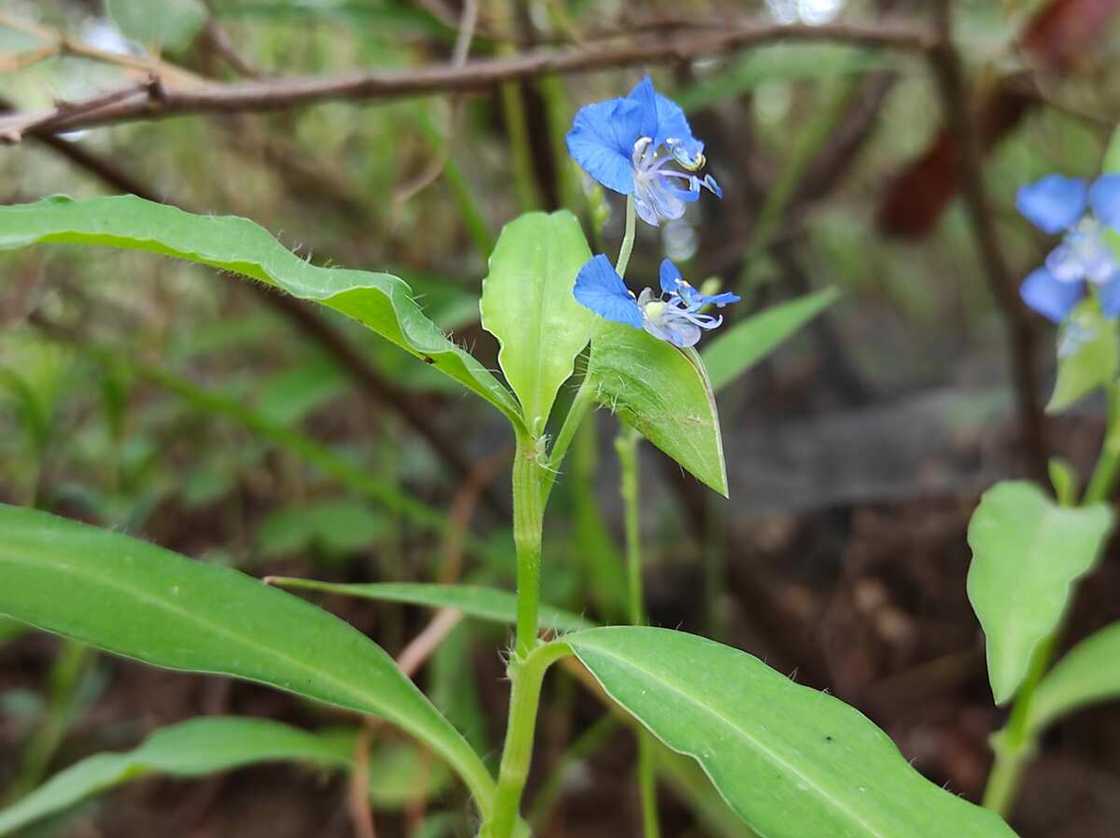
Source: Getty Images
Dayflower, or Commelina benghalensis, is a perennial creeping herb. It has lily-like leaves and reddish hairs towards the tip.
Dayflower invades areas with moist soil, e.g. grasslands, roadsides, and other disturbed areas. It is problematic in pastures and crop fields because it forms dense, pure stands that can smother food plants.
Jimson weed/ burundanga (Datura stramonium)
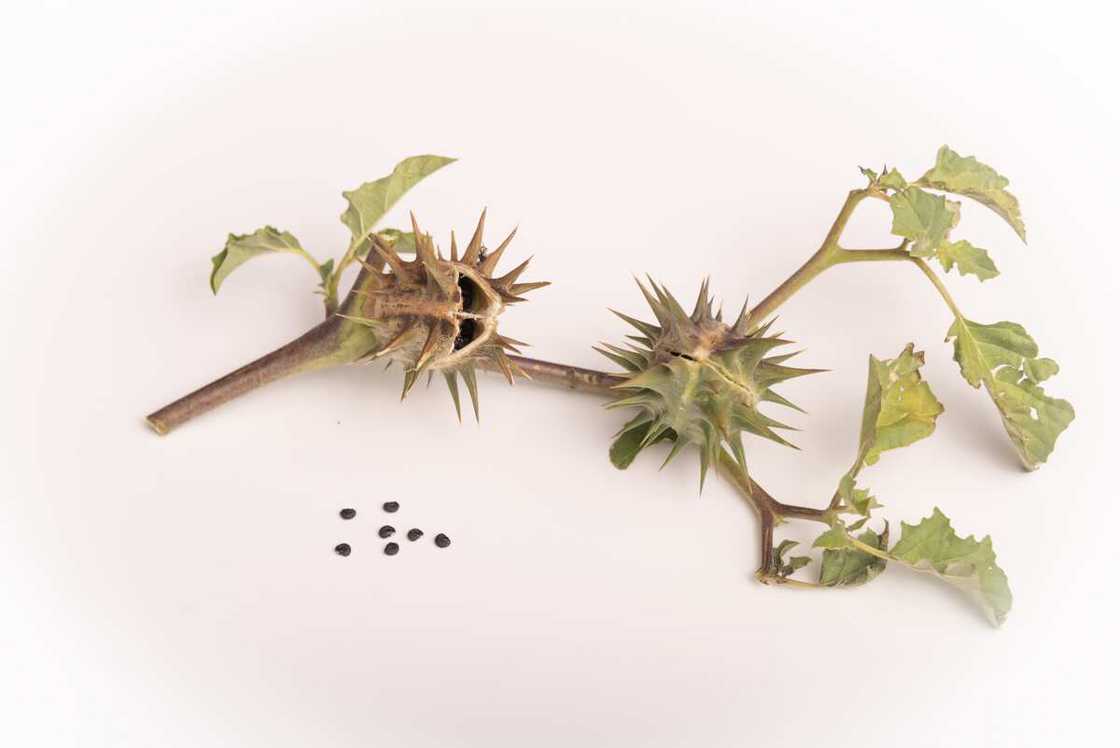
Source: Getty Images
Jimson weed or burundanga is also known as Datura stramonium. The plant can reach a height of 5 feet. It bears white or purple flowers and has prickly seed pods that split open at maturity.
This plant is considered poisonous but has medicinal uses. It is also an aggressive invasive plant in temperate climates worldwide.
Nutgrass (Cyperus rotundus)
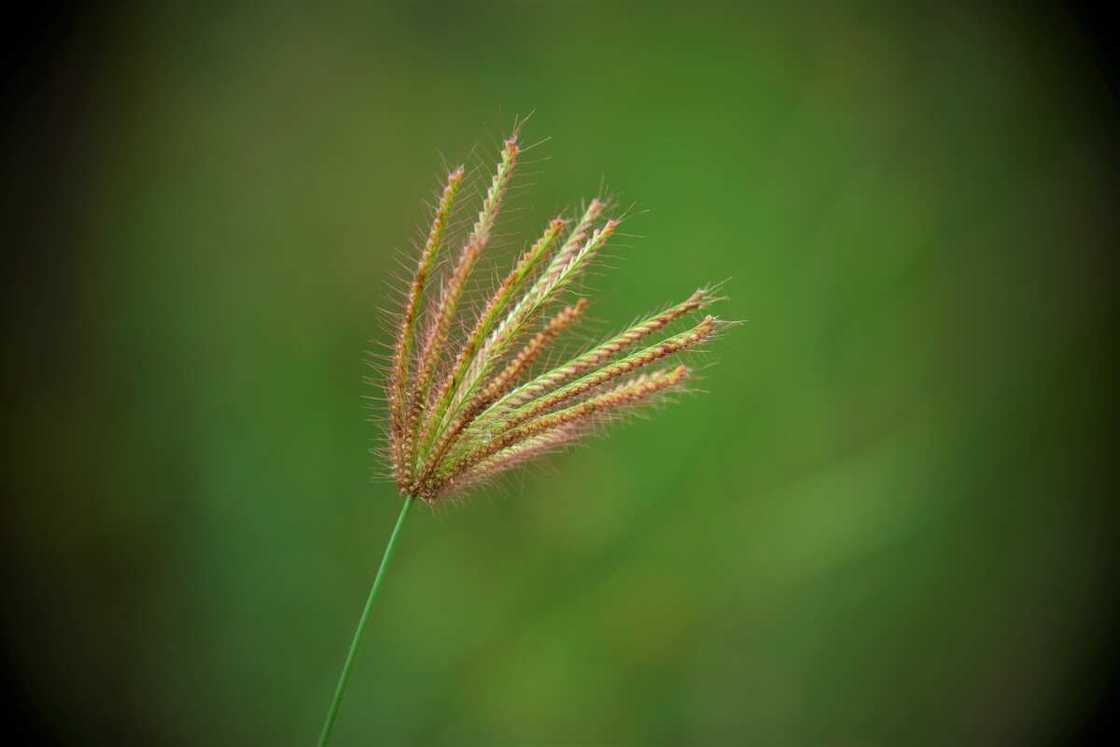
Source: Getty Images
Nutgrass, or Cyperus rotundus, cannot be missed on the list of grasses and their botanical names in Nigeria. It is a colony-forming perennial plant that adversely impacts agriculture.
It affects plantation crops in tropical and warm temperate climates around the world. Nutgrass is challenging to manage with either organic or conventional weed control strategies.
Milkweed (Euphorbia heterophylla)
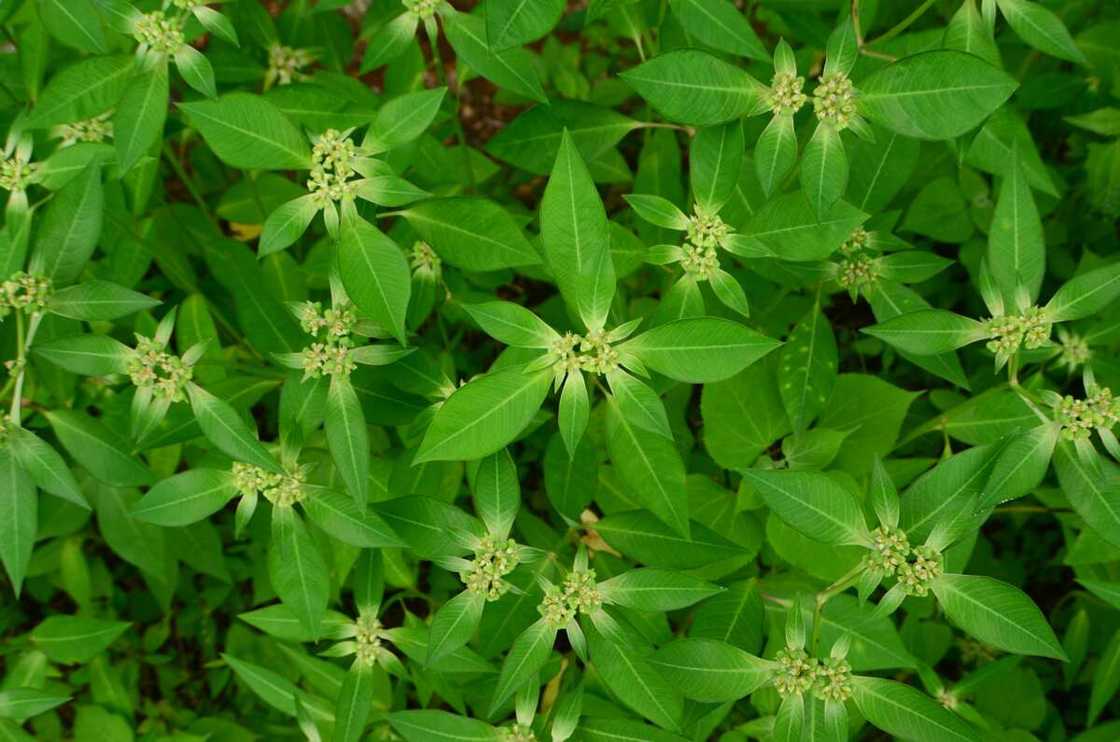
Source: Getty Images
Milkweed, or Euphorbia heterophylla, thrives in orchards, cop plantations, roadsides, gardens, and waste areas. It occasionally grows in temperate regions.
The milkweed plant is short-lived with an upright and branched main stem. It usually grows 20-80 cm tall but can reach up to two meters in height.
Bahama grass (Cynodon dactylon)
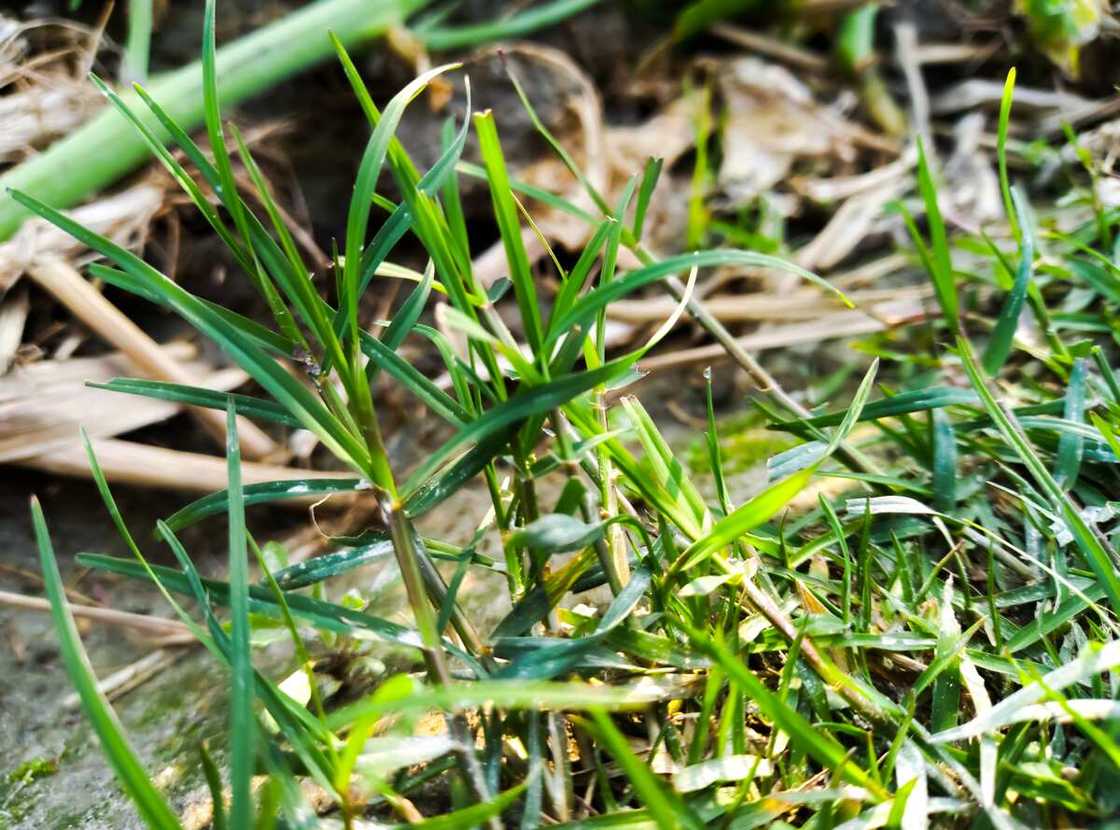
Source: Getty Images
Bahama grass is a tropical grass found in all tropical and subtropical areas. Bahama grass' botanical name is Cynodon dactylon. It is dominant in uncultivated areas, e.g. sea-coast sandy dunes, roadsides, and along rivers.
It is tolerant to drought and heavy grazing. As a result, it is valuable for pasture and is used for hay. On the flip side, this grass is a menace in plant farming.
Elephant grass (Pennisetum purpureum)
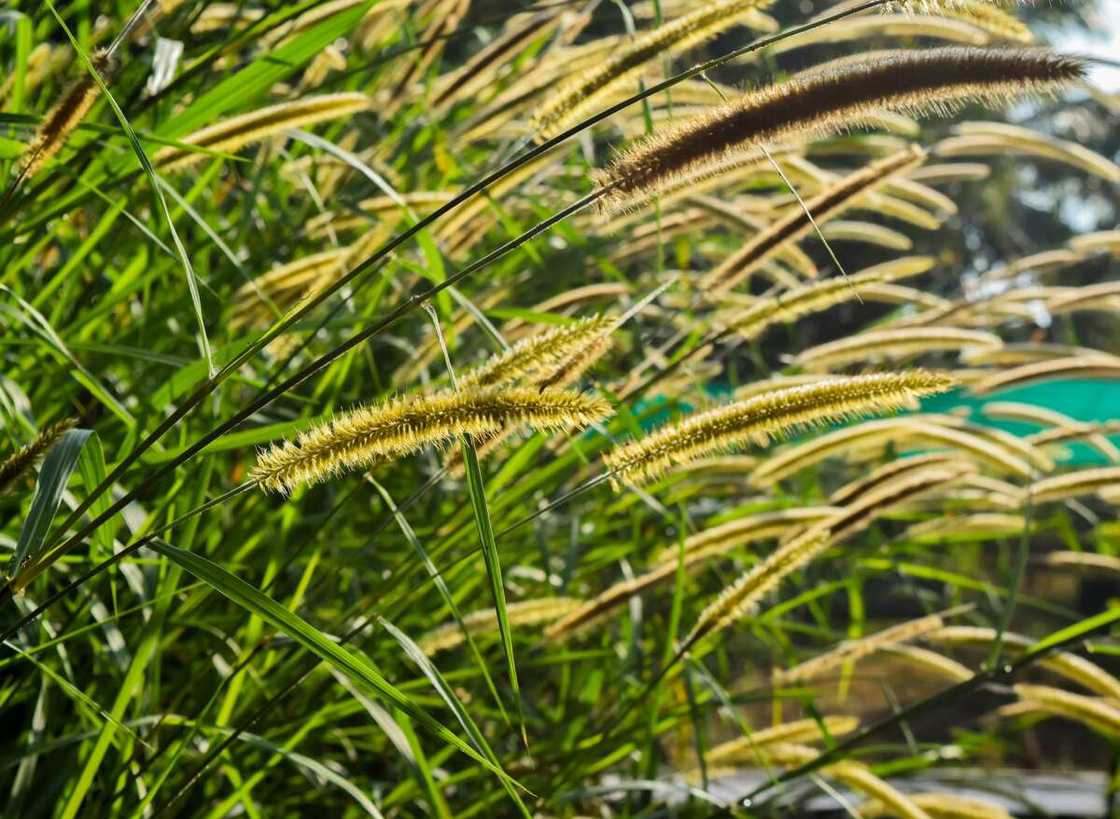
Source: Getty Images
Elephant grass is one of the top 10 grasses and their botanical names every Nigerian should know. Its botanical name is Pennisetum purpureum.
It is among the highest-yielding tropical grasses and can grow in dry or wet conditions. It forms dense, thick clumps up to one meter across. It has finely-toothed leaf margins and a prominent midrib on the leaf blade.
Carpet grass (Axonopus compressus)
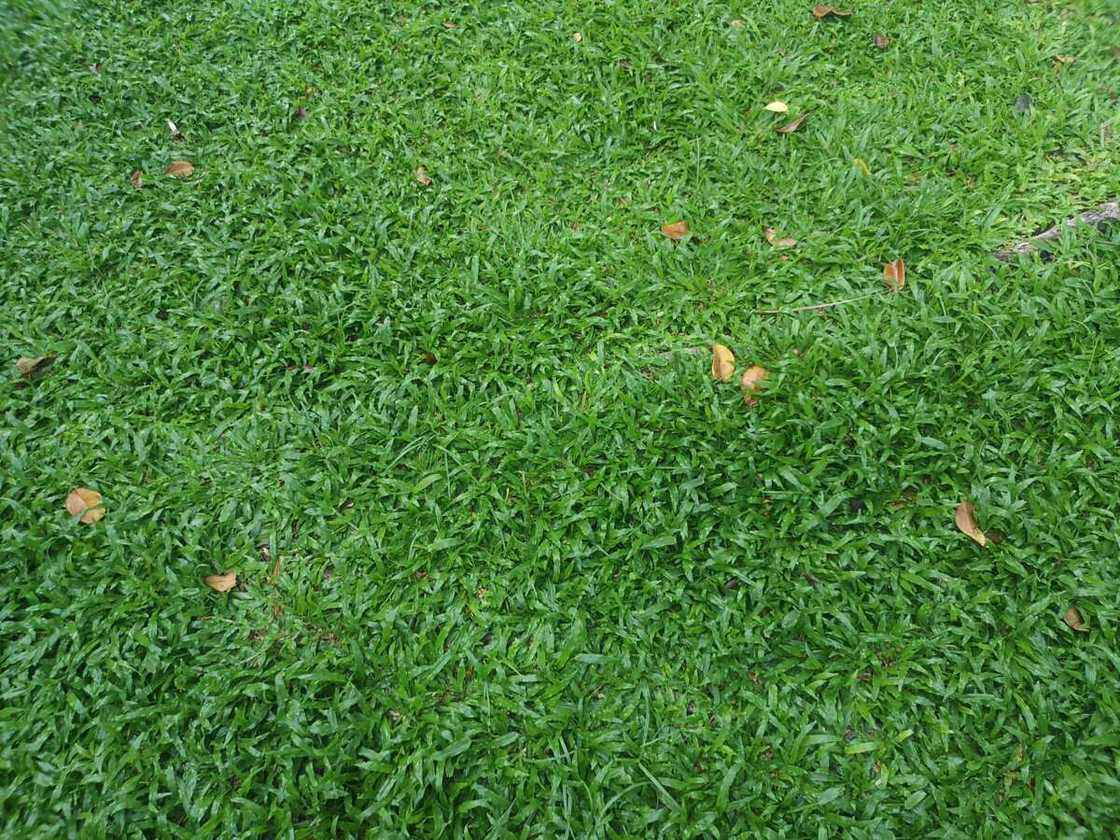
Source: Getty Images
Carpet grass, or Axonopus compressus, is common on roadsides, gardens, waste areas, and plantations. It thrives in moist, warm environments with full sunlight.
Carpet grass is among the most persistent grasses. It can withstand trampling. It cannot withstand long periods of waterlogged conditions but grows on a wide range of soils.
African Club Moss (Selaginella kraussiana)
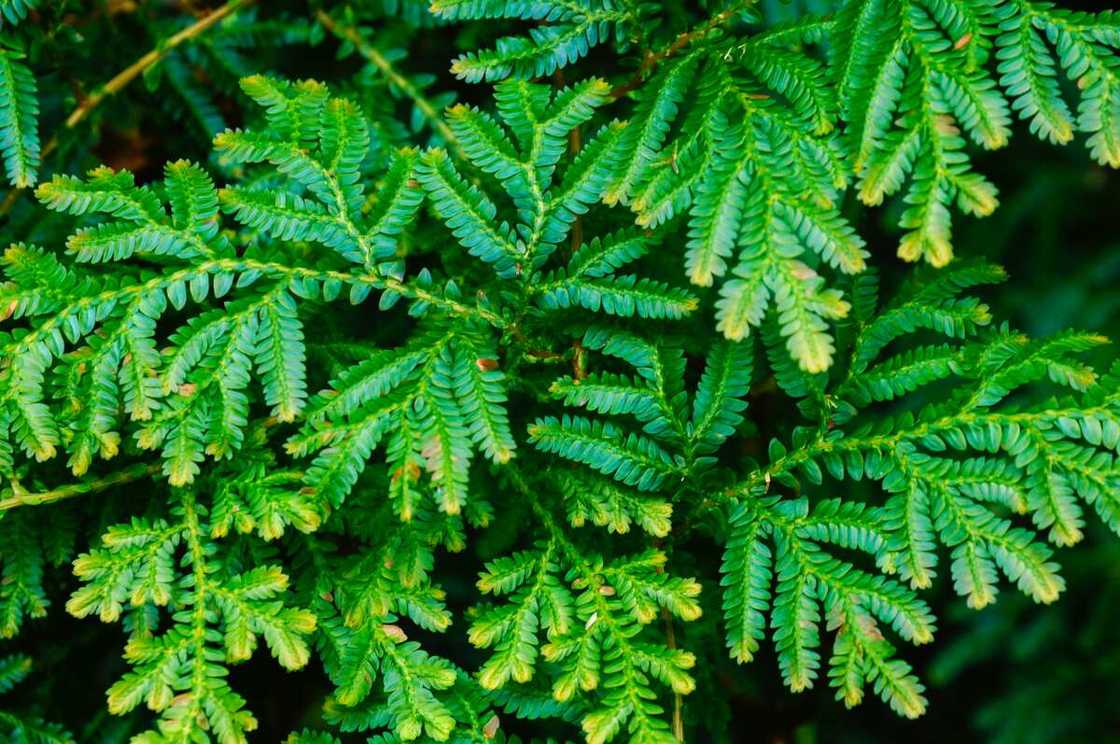
Source: Getty Images
If you are looking for an album of weeds and their botanical names, you will come across African Club Moss. Its botanical name is Selaginella kraussiana, a plant native to Africa.
This plant is a cousin to the true ferns. It is low-growing and mat-forming and thrives in rich, moist to wet soils. Trimming does not control its rapid spread because retained cuttings root and sprout quickly.
Buffalo grass (Stenotaphrum secundatum)
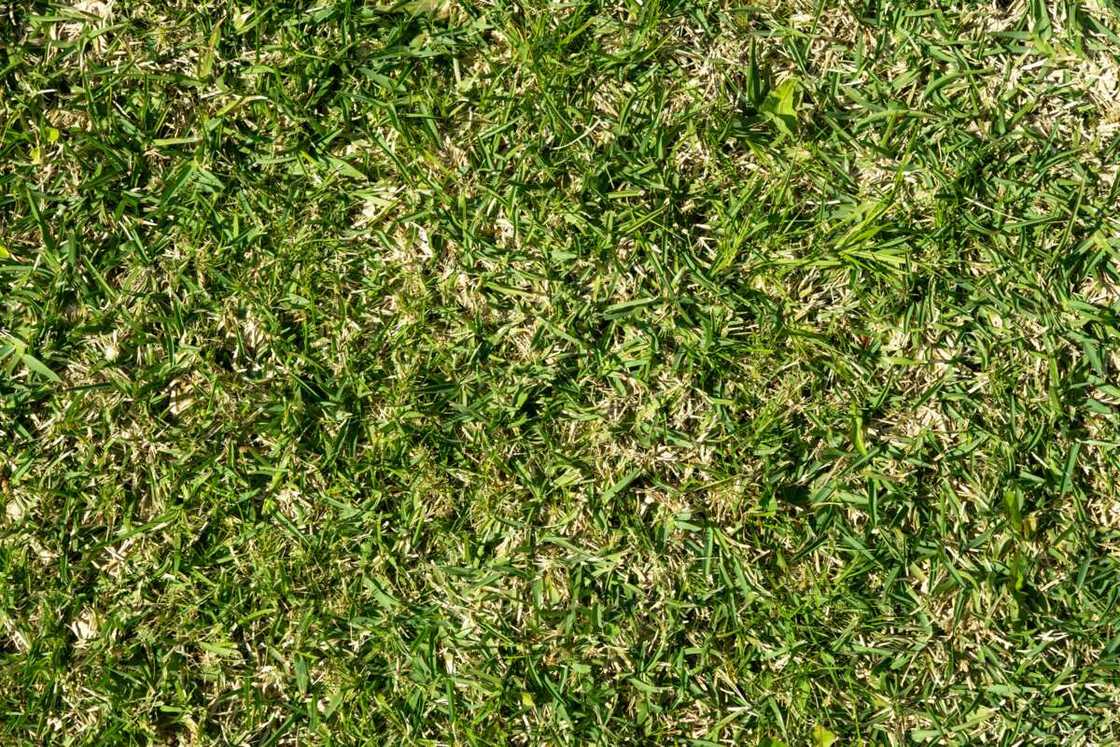
Source: Getty Images
Buffalo grass, or Stenotaphrum secundatum, invades roadsides, gardens, river banks, swamps, coastal areas, and other disturbed sites. It is considered an environmental weed.
While it can be used for lawns, it is a menace to crop farmers because it competes for nutrients and space with food crops.
Creeping foxglove (Asystasia gangetica)
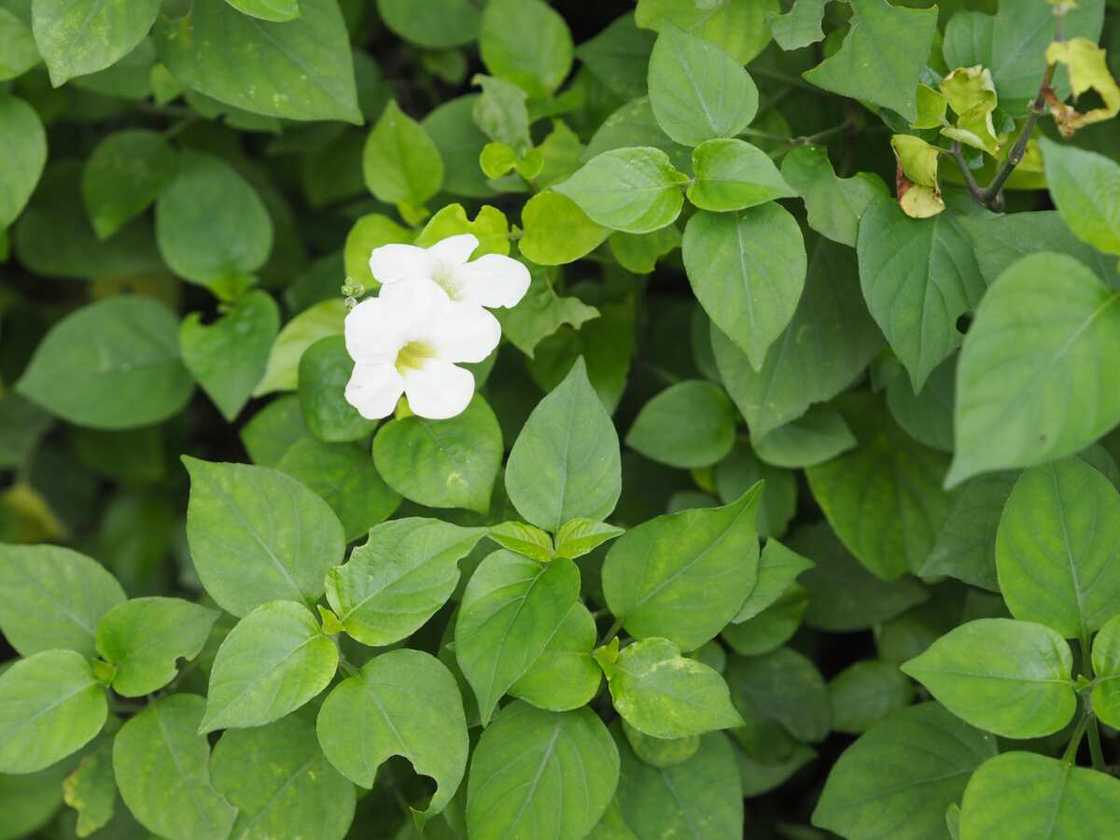
Source: Getty Images
Creeping foxglove, or Asystasia gangetica, is a fast-growing, spreading, herbaceous groundcover plant that attracts many species of butterflies to the garden. It produces white flowers and is regarded as an environmental weed.
Falsethistle (Acanthus montanus)
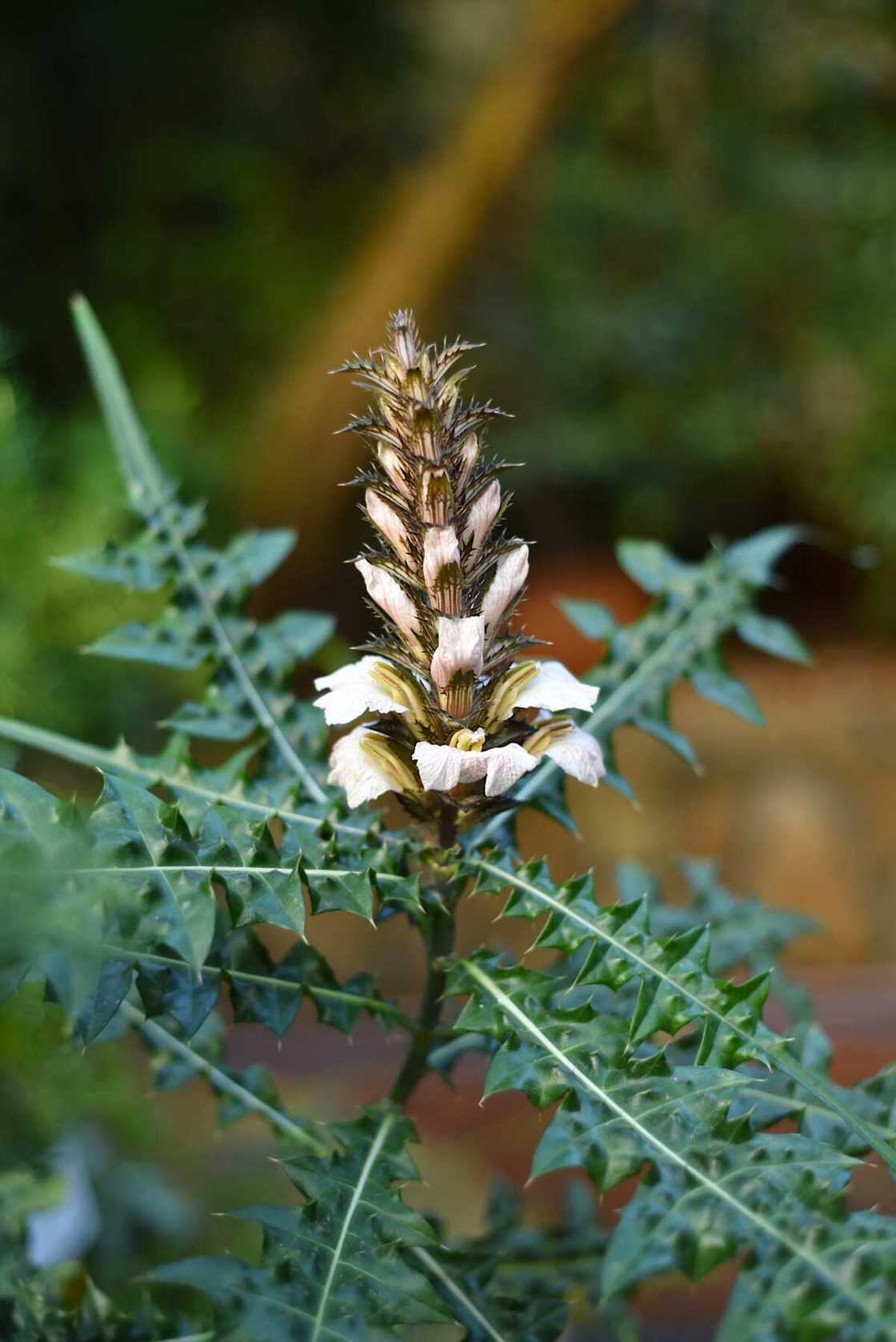
Source: Getty Images
Falsethistle, or Acanthus montanus, is native to tropical areas in Western Africa. It is a thinly branched perennial with basal clusters of oblong, dark green leaves with silver marks and wavy margins. The leaves are also thorny.
While this prickly semi-woody herb has medicinal value in some communities, it is a nuisance to food crop farmers.
Nuke-Noh (Tridax procumbens)
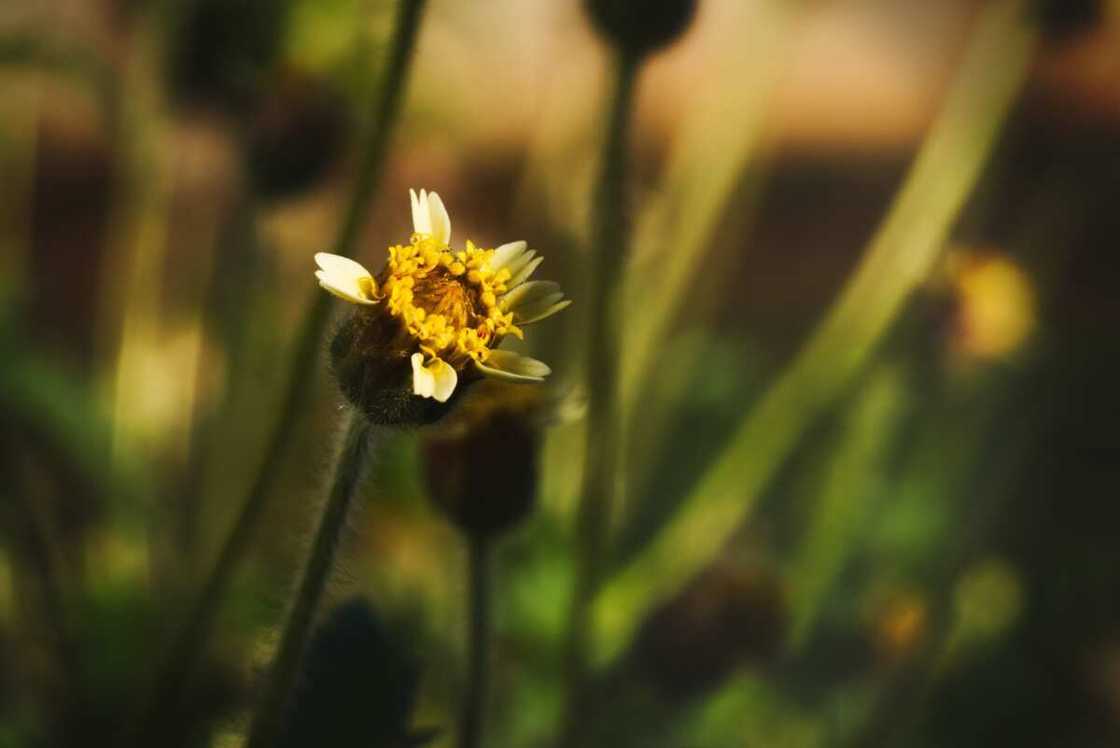
Source: Getty Images
Nuke-Noh, or Tridax procumbens, is a flowering plant in the daisy family. It has great drought resistance and tends to outlive all grasses and most broad-leaved plants. In Nigeria, this plant is fed to poultry. Some communities use it for medicinal purposes.
Regional prevalence of weeds
Dr. Okon G. Okon, Plant Stress Physiologist at Akwa Ibom State University, explains in an interview that specific weeds thrive in different regions in Nigeria due to variations in climate, soil type, cropping systems, and land use practices. He shared the following:
- Sudan and Sahel Savanna (Northern Nigeria) - In this region, low rainfall and semi-arid conditions favor drought-resistant weeds, such as:
- Striga hermonthica (Witchweed) – a parasitic weed affecting maize, sorghum, and millet.
- Cenchrus biflorus (African foxtail) – common in dryland farming.
- Echinochloa colona (Jungle rice) – is found in irrigated fields.
- Tribulus terrestris (Puncture vine) – aggressive ground-covering weed.
- Sida acuta (Wireweed) – common in disturbed soils.
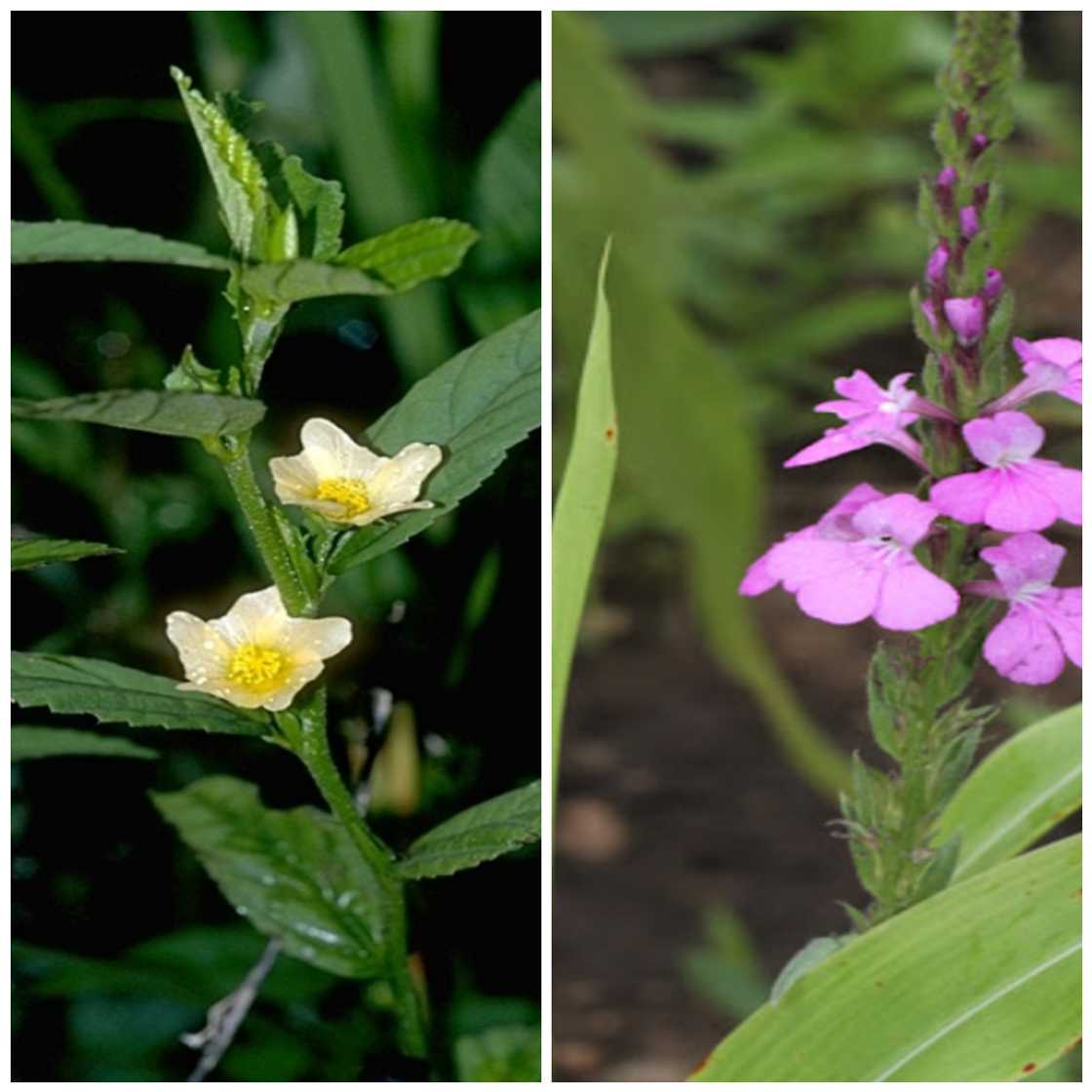
Source: UGC
- Guinea Savanna (Central Nigeria – Middle Belt) - This is characterized by moderate rainfall and mixed farming systems, weeds like the following frequently appear:
- Imperata cylindrica (Speargrass) – highly invasive in fallow lands and croplands.
- Chromolaena odorata (Siam weed) – common in abandoned farmlands and roadsides.
- Aspilia africana (Wild sunflower) – dominant in bush fallow systems.
- Ageratum conyzoides (Goat weed) – invades maize and cassava farms.
- Digitaria horizontalis (Smooth crabgrass) – common in cereal and legume fields.
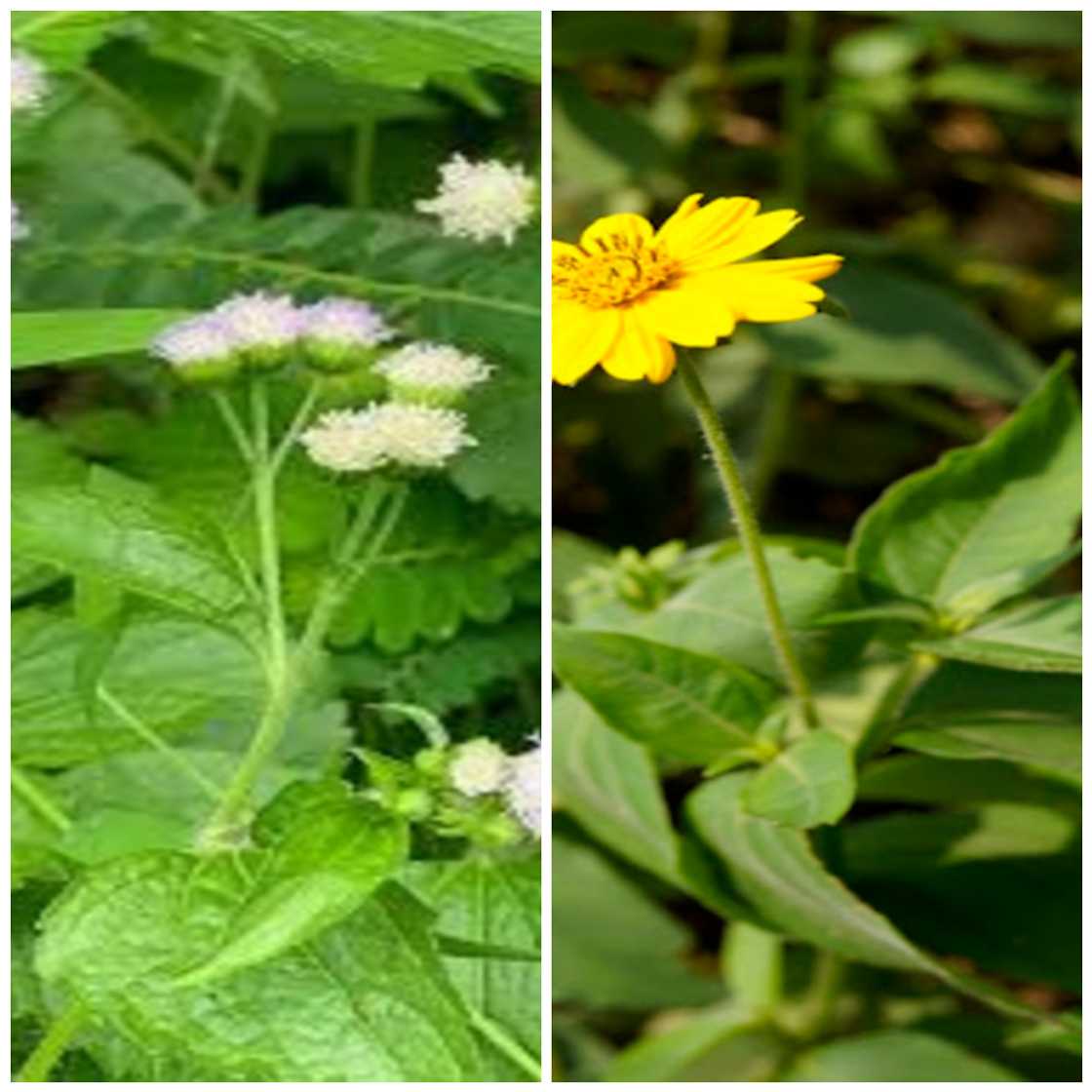
Source: UGC
- Rainforest (Southern Nigeria – Including Akwa Ibom state) - This zone experiences high rainfall and dense vegetation and supports fast-growing broadleaf weeds and climbers. Examples include:
- Aspilia africana (Wild sunflower) – dominates farmland and forest edges.
- Pueraria phaseoloides (Tropical kudzu) – a smothering vine common in oil palm plantations.
- Panicum maximum (Guinea grass) – common in pastures and roadsides.
- Centrosema pubescens (Butterfly pea) – a creeping weed found in fallow lands.
- Mimosa pudica (Sensitive plant) – common in wet farmlands and plantation crops.
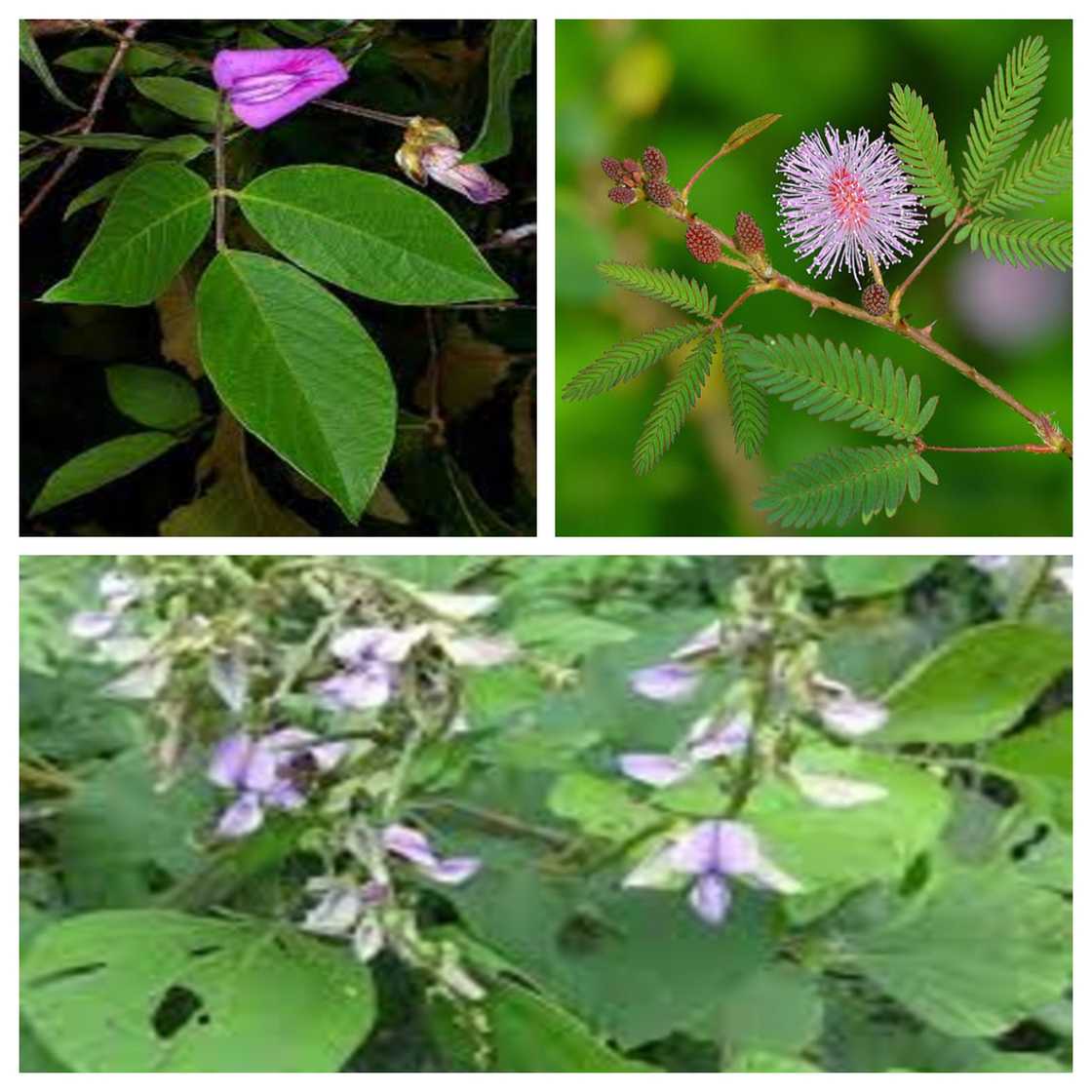
Source: UGC
- Coastal and Mangrove Swamps (South-South Nigeria – Niger Delta region) - These areas are waterlogged and saline, supporting aquatic and salt-tolerant weeds like:
- Eichhornia crassipes (Water hyacinth) – a highly invasive floating weed in rivers and lakes.
- Nymphaea lotus (White water lily) – common in flooded areas.
- Paspalum vaginatum (Saltgrass) – found in brackish wetlands and mangroves.
- Ipomoea aquatica (Water spinach) – a creeping vine in swampy areas.
- Typha domingensis (Southern cattail) – invades irrigation canals and marshlands.
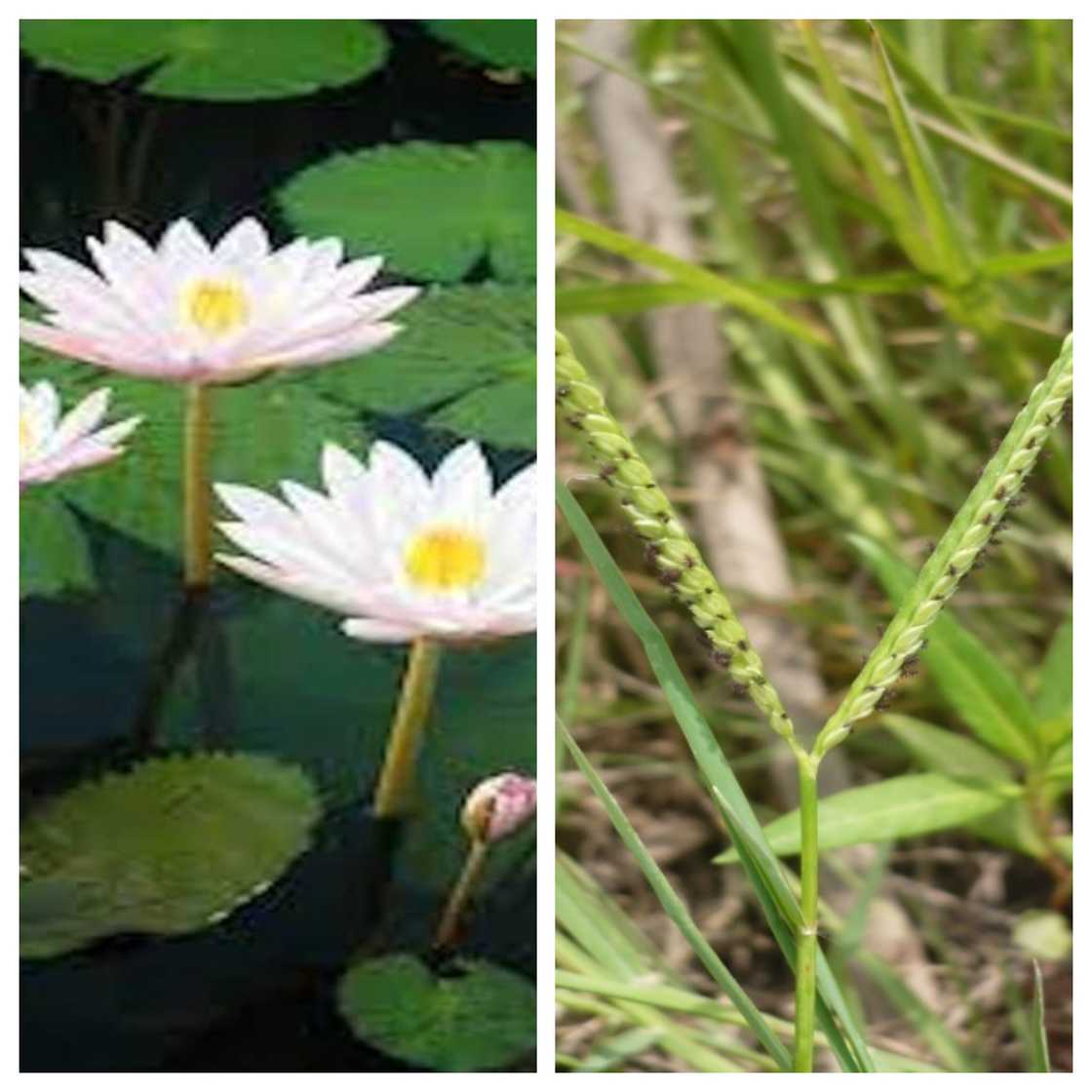
Source: UGC
- Derived Savana (a transition zone between Rainforest and Guinea Savanna) - This zone supports a mix of woody plants and herbaceous weeds, including:
- Andropogon gayanus (Gamba grass) – a dominant weed in pasturelands.
- Commelina benghalensis (Benghal dayflower) – invades crop fields and gardens.
- Panicum repens (Torpedo grass) – common in wetland rice fields.
- Rottboellia cochinchinensis (Itch grass) – problematic in maize and sorghum farms.
- Tridax procumbens (Tridax daisy) – a fast-growing weed in disturbed areas.
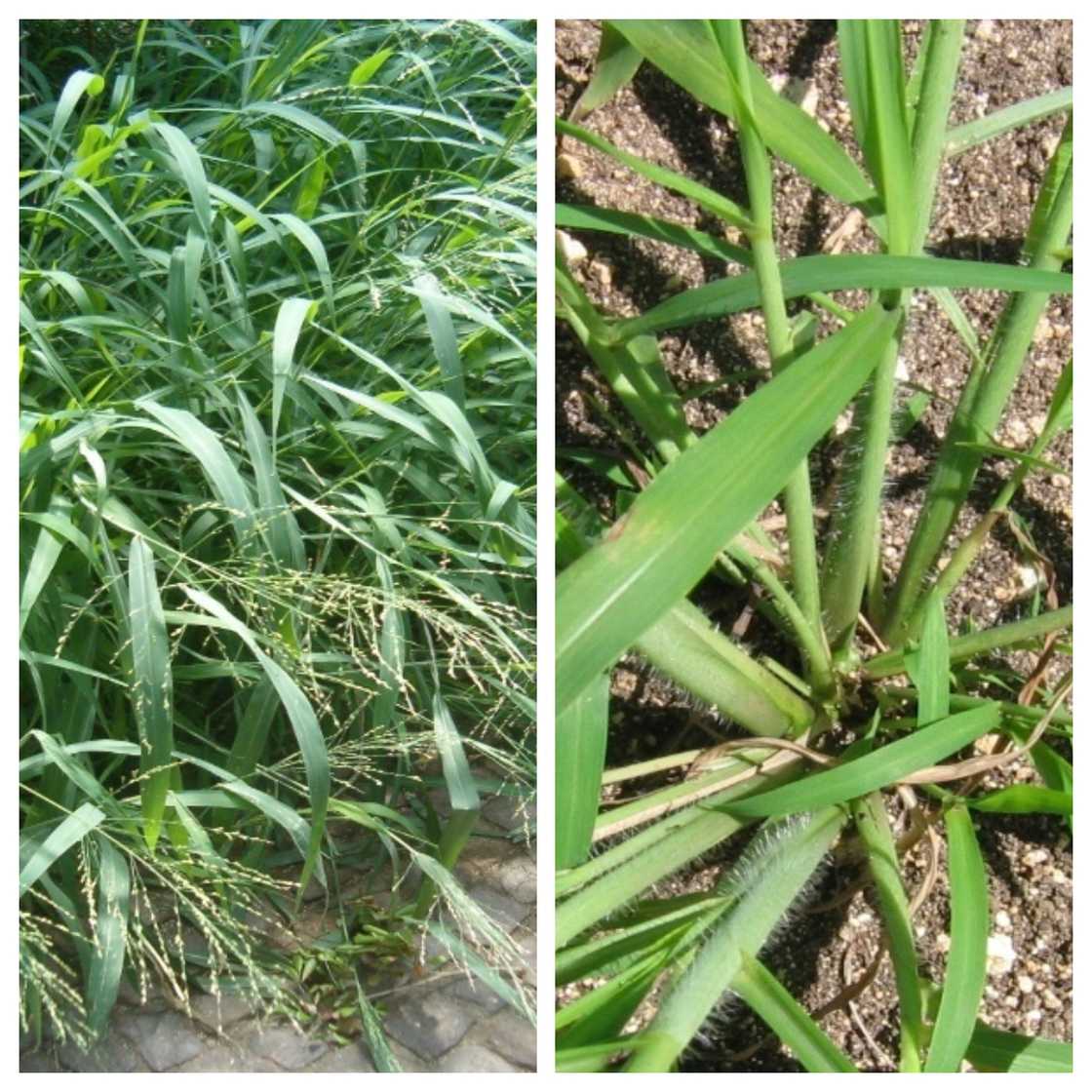
Source: UGC
Differentiating harmful and useful weeds
Dr. Okon emphasizes that distinguishing between harmful and useful weeds requires looking at several key factors:
Morphological characteristics
- Growth habit: Harmful weeds are often fast-growing, invasive, and spread rapidly (e.g., Chromolaena odorata), while useful plants are typically cultivated, well-managed, and have controlled growth patterns (e.g., Telfairia occidentalis - Fluted pumpkin).
- Leaf structure: Harmful weeds may have thorns, spines, or irritating hairs that deter animals and humans (e.g., Mimosa pudica - Sensitive plant), whereas useful plants generally have softer or edible leaves, often used for food, medicine, or fodder (e.g., Vernonia amygdalina - Bitter leaf).
- Root system: Harmful weeds often have deep, aggressive, or fibrous root systems that compete with crops for nutrients and water (e.g., Imperata cylindrica - Speargrass), while useful plants might be tuberous, shallow, or well-adapted for controlled growth (e.g., Dioscorea spp. - Yam).
- Seed production: Harmful weeds produce many seeds, often with dispersal adaptations (wind, water, animals) for rapid colonization (e.g., Tridax procumbens - Coat buttons), compared to useful plants that have fewer, larger, or cultivated seeds, often requiring human intervention to propagate (e.g., Zea mays - Maize).
Ecological impact
- Competition with crops: Harmful weeds compete aggressively for nutrients, water, and sunlight, reducing crop yields (e.g., Striga hermonthica - Witchweed). In contrast, useful plants often complement crops by improving soil fertility or repelling pests (e.g., Tephrosia vogelii - Fish poison plant for pest control).
- Effects on soil health: Harmful weeds deplete soil nutrients, increase soil erosion, or release toxic chemicals that inhibit other plants (allelopathy) (e.g., Rottboellia cochinchinensis - Itch grass), meanwhile, useful plants may fix nitrogen, improve soil structure, or act as cover crops to prevent erosion (e.g., Mucuna pruriens - Velvet bean).
Economic and medicinal value
While harmful weeds are mostly non-edible, poisonous, or cause crop damage (e.g., Datura stramonium - Jimsonweed, toxic to humans and animals), useful plants have economic importance (food, medicine, fodder, fiber, fuel) (e.g., Colocasia esculenta - Cocoyam, Elaeis guineensis - Oil palm).
Examples of harmful weeds in Nigeria
These weeds negatively affect crops, animals, or human health.
Weed name | Botanical name | Harmful effects |
Witchweed | Striga hermonthica | Parasitic weed on maize, sorghum, and millet, reduces yield |
Speargrass | Imperata cylindrica | Spreads aggressively, difficult to eradicate |
Siam weed | Chromolaena odorata | Invasive, suppresses native vegetation |
Water hyacinth | Eichhornia crassipes | Blocks waterways, disrupts fishing and irrigation |
Itch grass | Rottboellia cochinchinensis | Causes skin irritation, competes with cereal crops |
Jimsonweed | Datura stramonium | Highly toxic to humans and livestock |
Examples of useful weeds in Nigeria
These weeds have economic, medicinal, soil enrichment, or pest control benefits.
Weed name | Botanical name | Useful properties |
Goat weed | Ageratum conyzoides | Soil cover, prevents erosion |
Sensitive plant | Mimosa pudica | Nitrogen fixer, medicinal |
Velvet bean | Mucuna pruriens | Soil improver, used in herbal medicine |
Purslane | Portulaca oleracea | Edible, rich in Omega-3 fatty acids |
Tephrosia | Tephrosia vogelii | Used for natural pest control |
Weed control methods in Nigeria
Effective weed management is critical, and Dr. Okon details several methods used by Nigerian farmers:
- Traditional methods: Techniques like hand weeding and slash-and-burn (bush burning) are common among subsistence farmers. Although hand weeding is cheap and environmentally friendly, it is labor-intensive.
- Mechanical methods: Practices such as hoeing, tilling, and mowing help physically remove weeds. However, these can sometimes damage soil structure or be ineffective against deep-rooted species.
- Cultural methods: Crop rotation, cover cropping, proper plant spacing, and dense planting can reduce weed growth by suppressing light and nutrients available to weeds.
- Chemical methods: Selective, non-selective, pre-emergence (applied before weed germination), and post-emergence (applied after weeds have emerged) herbicides offer rapid control but must be managed carefully to avoid issues like herbicide resistance.
- Biological methods: Farmers also use natural enemies such as specific insects or grazing animals to control weeds, a sustainable method with minimal chemical impact.
- Integrated Weed Management (IWM): Combining multiple methods is often the most effective and environmentally friendly approach because it reduces herbicide resistance, minimizes labor costs, and protects the environment.
Dr. Okon also notes the challenges of weed control in Nigeria such as:
- High cost of herbicides and farm machinery.
- Lack of awareness of sustainable methods.
- Climate change affecting weed patterns.
- Resistance of some weeds to herbicides.
What are the common weeds found on farms?
Some common weeds found on farms are Nuke-Noh, Falsethistle, Creeping foxglove, Buffalo grass, African Club Moss, Dayflower, Carpet grass, Elephant grass, Bahama grass, burundanga, Milkweed, and Nutgrass.
What are the common weeds and their botanical names?
The most common weeds and their botanical names are Carpet grass (Axonopus compressus), Bahama grass (Cynodon dactylon), Siam weed (Chromolaena odorata), Spear grass (Imperata cylindrica), Dayflower (Commelina benghalensis), Nutgrass (Cyperus rotundus), and Milkweed (Euphorbia heterophylla).
What is the botanical name of Bahama grass?
The botanical name of Bahama grass is Cynodon dactylon.
What is the botanical name of Carpet grass?
The botanical name of Carpet grass is Axonopus compressus. This grass is common on roadsides, gardens, waste areas, and plantations.
All farmers must learn about the common weeds and their scientific names with pictures in Nigeria. This information is useful in coming up with weed management strategies.
READ ALSO: Advantages and disadvantages of integrated farming system
Legit.ng recently published the advantages and disadvantages of an integrated farming system. Contemporary farmers minimize costs and maximize agricultural productivity and profits by implementing proper skills and techniques.
Combining animal keeping and crop production is one of the best ways of increasing harvest and profits. In an integrated farming system, plant production and animal farming are done simultaneously using modern and traditional tools and technologies.
Source: Legit.ng

Cyprine Apindi (Lifestyle writer) Cyprine Apindi is a content creator and educator with over six years of experience. She holds a Diploma in Mass Communication and a Bachelor’s degree in Nutrition and Dietetics from Kenyatta University. Cyprine joined Briefly.co.za in mid-2021, covering multiple topics, including finance, entertainment, sports, and lifestyle. In 2023, she finished the AFP course on Digital Investigation Techniques. She received the 2023 Writer of the Year Award. In 2024, she completed the Google News Initiative course. Email: cyprineapindi@gmail.com

Adrianna Simwa (Lifestyle writer) Adrianna Simwa is a content writer at Legit.ng where she has worked since mid-2022. She has written for many periodicals on a variety of subjects, including news, celebrities, and lifestyle, for more than three years. She has worked for The Hoth, The Standard Group and Triple P Media. Adrianna graduated from Nairobi University with a Bachelor of Fine Arts (BFA) in 2020. In 2023, Simwa finished the AFP course on Digital Investigation Techniques. You can reach her through her email: adriannasimwa@gmail.com


